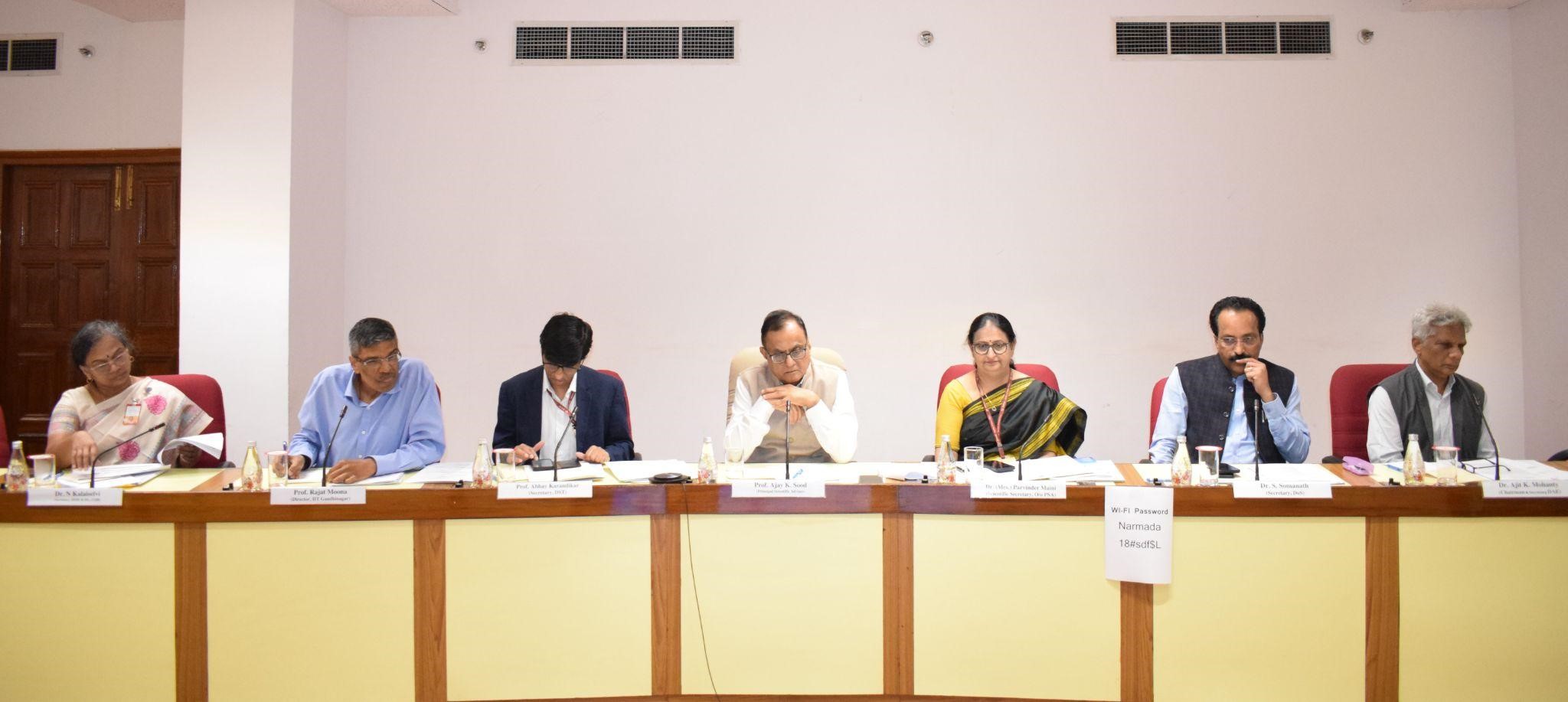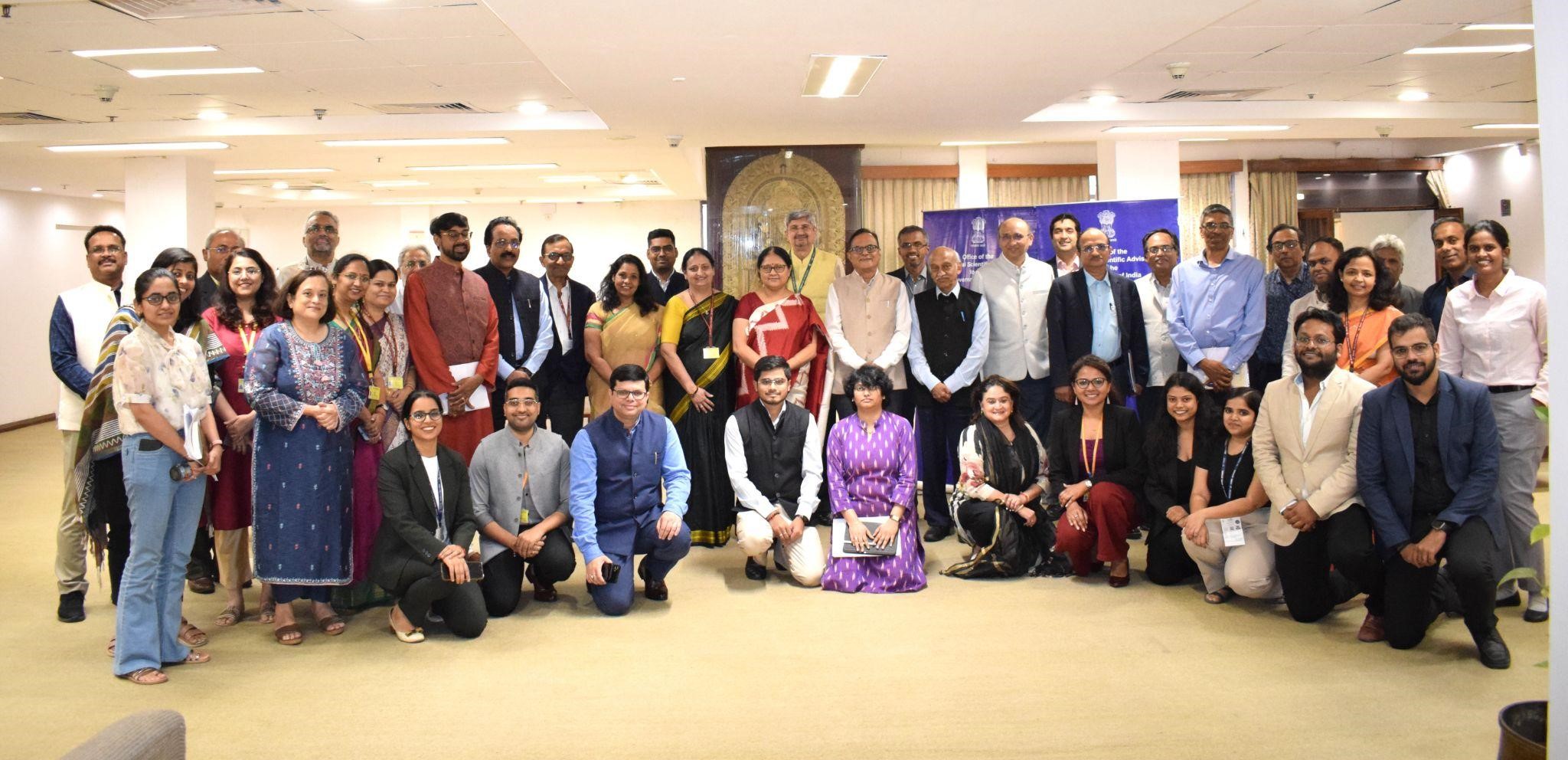Office of Principal Scientific Advisor to GoI
26th Prime Minister’s Science, Technology & Innovation Advisory Council (PM-STIAC) Meeting Discusses Accelerating Industry-Academia Partnership for Research and Innovation in India
Posted On:
18 OCT 2024 6:49PM by PIB Delhi
The 26th Prime Minister’s Science, Technology & Innovation Advisory Council (PM-STIAC) meeting was chaired by Professor Ajay Kumar Sood today (October 18, 2024) at Vigyan Bhawan Annexe in New Delhi.

Along with the PM-STIAC members, the meeting brought together leaders from the government officials, academic institutions and industry bodies to discuss and gain a deeper understanding of the current state-of-play, plausible partnership models, their local contextualisation and effective implementation modalities.
The meeting was joined by key government officials including by Dr. V.K. Saraswat, Member S&T, NITI Aayog, Dr. Parvinder Maini, Scientific Secretary at the Office of the Principal Scientific Adviser to the Government of India, Dr. Rajesh S. Gokhale, Secretary, Department of Biotechnology; Mrs Leena Nandan, Secretary, Ministry of Environment, Forest, and Climate Change; Dr. S. Somnath, Secretary, Department of Space; Dr Rajiv Bahl, Secretary, Department of Health Research, and Director General, Indian Council of Medical Research; Dr. N. Kalaiselvi, Secretary, Department of Scientific & Industrial Research, and Director General, Council of Scientific and Industrial Research; Dr. Samir V. Kamat, Secretary, Department of Defence R&D and Chairman, DRDO; Dr. Ajit Kumar Mohanty, Secretary, Department of Atomic Energy; Mr. S. Krishnan, Secretary, Ministry of Electronics and Information Technology; Prof. Abhay Karandikar, Secretary, Department of Science and Technology; and Dr. Pawan Goenka, Chairman, IN-SPACe.
Leaders from academic institutions included Prof. Govindan Rangarajan, Director, IISc Bengaluru; Prof. Shireesh Kedare, Director, IIT Bombay; Prof. V. Ramgopal Rao, Group Vice Chancellor, BITS Pilani Campuses; and Prof. Rajat Moona, Director, IIT Gandhinagar.
Industry bodies including NASSCOM (Ms. Debjani Ghosh, President, and Mr. Rajesh Nambiar, President-designate); Biocon (Ms. Kiran Mazumdar Shaw, Executive Chairperson and Founder), Invest India (Ms. Nivruti Rai, CEO & MD), FICCI (Mrs. Anandi Iyer, Co Chair, FICCI Innovation Committee), Foundation for Advancing Science and Technology (Mr. Ashish Dhawan, Founder) and Centre for Technology, Innovation and Economic Research (Mr. Janak Nabar, CEO) shared their insights on the topic.
Dr. Raghunath Anant Mashelkar, former Director General, Council of Scientific & Industrial Research and Dr Naushad Forbes, former Chairman, CII, sent their insights which were circulated and duly discussed.
In his opening address, Prof. Sood highlighted the need for strengthening industry-academia partnerships for advancing research and innovation (R&I) in general, and through the Anusandhan National Research Foundation (ANRF), in particular. For this goal, he emphasized that the stakeholders - industry, academia and government – have to play a complementary role to get increased socio-economic benefits from the efforts made in the country for R&I activities.
Dr. V.K. Saraswat, Member S&T, NITI Aayog, called for identifying priority areas where industry and academia can collaborate to accelerate research and innovation in the country. He advocated for prioritizing design and advancing academic research to make India a product-driven nation. He stressed on building expertise in frontier technologies, fostering collaboration between academia and industry, building trust in indigenous R&D and increasing exposure in academia to the industry as vital steps to enhance the R&D ecosystem in the country.
Presentations were made by the experts to highlight the triple helix model of industry-academia partnerships for research and innovation, facilitated by the government. The discussions centred on sector-specific models, challenges and recommendations for enabling and leveraging such partnerships in various domains like ICT, life sciences, pharmaceuticals, space and electronics. They aligned on identifying certain mission-critical priority areas where industry-academia partnerships can drive significant multiplier effects in the country’s growth. The importance of goal alignment between government, industry and academia to deliver impactful outcomes was also discussed.
After the presentations, the Chair invited interventions from special invitees and PM-STIAC members. They discussed expanding the triple-helix model to also include startups, accelerators and venture capital funds to drive industry-academia partnerships. They highlighted the government's role as both a customer and facilitator, advocating for multidisciplinary approaches and increased mobility between academic research and industry. They suggested policies that support seamless movement between academia and industry, including research translation offices, and highlighted the significance of long-term government investment in both basic research and cutting-edge technologies.
In his concluding remarks, Prof. Sood emphasized the importance of aligning incentives across stakeholders to bring R&D capabilities to the forefront. He echoed the recommendations made by earlier speakers on the need to bridge the gap between existing resources and future demands, ensuring that research and innovation address the critical needs of the nation.

***
MJPS/ST
(Release ID: 2066178)
Visitor Counter : 4470